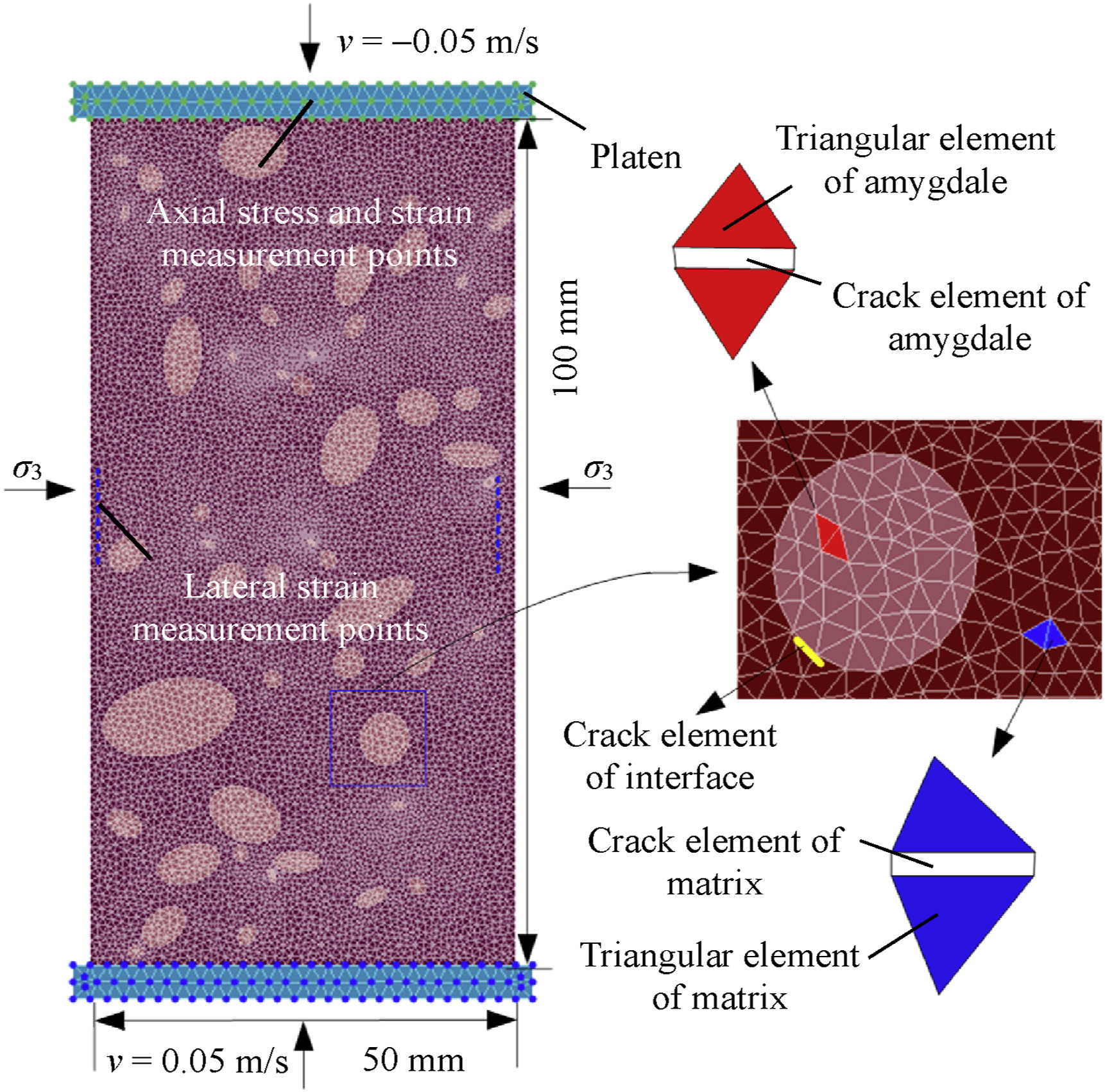JRMGE / Vol 14 / Issue 1
Effects of amygdale heterogeneity and sample size on the mechanical properties of basalt
Zhenjiang Liu, Chunsheng Zhang, Chuanqing Zhang, Huabin Wang, Hui Zhou, Bo Zhou
Show More
a School of Civil and Hydraulic Engineering, Huazhong University of Science and Technology, Wuhan, 430074, China
b PowerChina Huadong Engineering Corporation Limited, Hangzhou, 310014, China
c State Key Laboratory of Geomechanics and Geotechnical Engineering, Institute of Rock and Soil Mechanics, Chinese Academy of Sciences, Wuhan, 430071, China
d University of Chinese Academy of Sciences, Beijing, 100049, China
2022, 14(1): 93-107. doi:10.1016/j.jrmge.2021.10.001
Received: 2021-01-13 / Revised: 2021-07-18 / Accepted: 2021-10-18 / Available online: 2021-11-19
2022, 14(1): 93-107.
doi:10.1016/j.jrmge.2021.10.001
Received: 2021-01-13
Revised: 2021-07-18
Accepted: 2021-10-18
Available online: 2021-11-19
Due to the complex diagenesis process, basalt usually contains defects in the form of amygdales formed by diagenetic bubbles, which affect its mechanical properties. In this study, a synthetic rock mass method (SRM) based on the combination of discrete fracture network (DFN) and finite-discrete element method (FDEM) is applied to characterizing the amygdaloidal basalt, and to systematically exploring the effects of the development characteristics of amygdales and sample sizes on the mechanical properties of basalt. The results show that with increasing amygdale content, the elastic modulus (E) increases linearly, while the uniaxial compressive strength (UCS) shows an exponential or logarithmic decay. When the orientation of amygdales is between 0° and 90°, basalt shows a relatively pronounced strength and stiffness anisotropy. Based on the analysis of the geometric and mechanical properties, the representative element volume (REV) size of amygdaloidal basalt blocks is determined to be 200 mm, and the mechanical properties obtained on this scale can be regarded as the properties of the equivalent continuum. The results of this research are of value to the understanding of the mechanical properties of amygdaloidal basalt, so as to guide the formulation of engineering design schemes more accurately.
Keywords: Amygdaloidal basalt, Hard brittle rock, Structural heterogeneity, DFN-FDEM, Mechanical properties, Size-dependent effect
Article Data
Author(s) Information
Prof. Chuanqing Zhang
cqzhang@whrsm.ac.cn

Dr. Chuanqing Zhang is a professor at Institute of Rock and Soil Mechanics, Chinese Academy of Sciences (CAS). He is a member of editorial board of Rock and Soil Mechanics, and a member of Chinese Society for Rock Mechanics and Engineering (CSRME) and International Society for Rock Mechanics and Rock Engineering (ISRM). He is one of first group members and outstanding members of Youth Innovation Promotion Association, CAS, and is the winner of the 9th Youth Science and Technology Gold Award of CSRME. His research interests focus on the rock mechanics, disaster control and fault activation in deep underground engineering. In recent years, Dr. Zhang has chaired one of the Key Projects of the Yalong River Joint Fund of the National Natural Science Foundation of China, hosted and participated in 11 projects funded by national, provincial and ministerial projects. He has provided consultation for more than 20 national major projects and carried out systematic research on rock mechanics problems encountered in these projects. The research results have been widely applied in the construction process of these projects and played an important role in ensuring the safety of projects.

